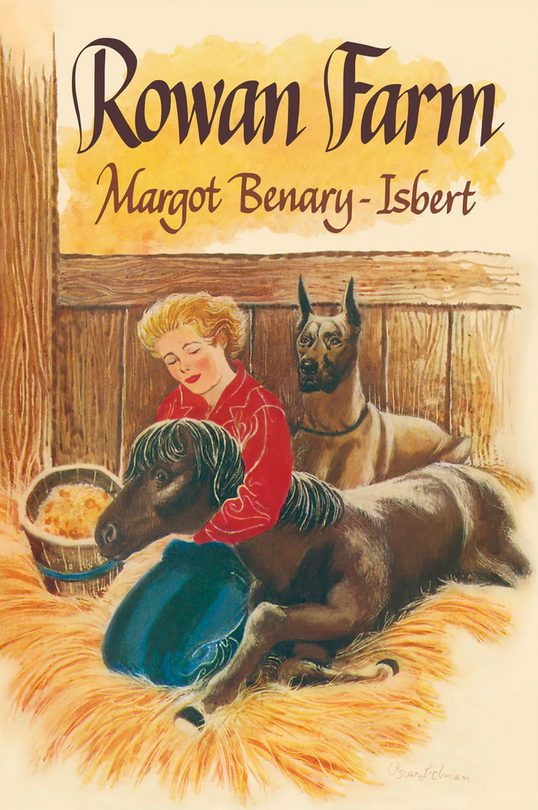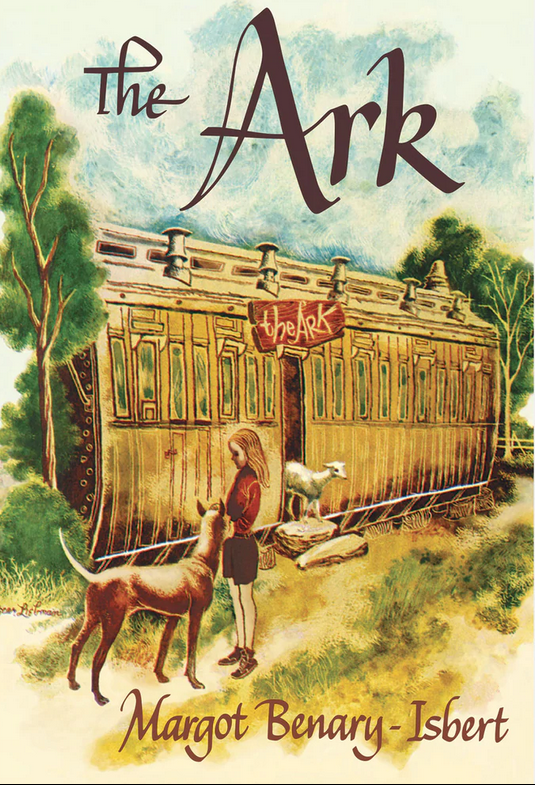Rowan Farm is a delightful sequel to Margot Benary-Isbert’s treasure, The Ark. This sequel picks up just a few weeks after The Ark concludes. I enjoyed this book. Rowan Farm is just as wholesome and enriching as the first. I am handing it to my 13-year-old without any concern except for one which I will highlight below. This story continues to tell about life on Rowan Farm, and has as many, if not more, animal stories. It also introduces a good number of additional characters who are also interesting and lovable. In this book, the Lechow family is healthier, happier, less insecure, and better positioned to help others.

Just like the first book, this one too reminds me of James Herrriot, Gene Stratton-Porter, and Hilda van Stockum. As the people of West Germany are beginning to be less hungry and a little more comfortable, we see people finding a way to really live and not just survive. Musicians are wanted again, dances are happening in barns, Protestants and Catholics are working together to rebuild their communities, American charities are sending aid, and young people are falling in love. But, this is still post-war Germany, and the challenges are still immense. Refugees from Russian-occupied East Germany are pouring into West Germany, veterans are scarred and wounded in mind and body, food and materials continue to be scarce, and a huge volume of war-made orphans are struggling to survive. This story touches on all of those themes.

While The Ark is a book that I would easily use for family read-aloud with my 11, 13, and 15-year-olds, Rowan Farm is a little different. The antics between Joey and Hans continue to delight and remind me of Tolkien’s Merry and Pippin. The family life is so wholesome and normal. But, because Margaret, Matthias, Dieter, and several new characters are of dating age, and barn dances have come back, romantic storylines run throughout this book.
Because Mrs. Almut is such a good soul, Rowan Farm becomes a refuge for a wide variety of people from different backgrounds and with different beliefs. In The Ark, we know that there is a divide between the Catholics and the German Protestants (probably all Lutheran) in the village, but in Rowan Farm, we hear some Eastern religious influence in the story as well as meeting a delightful American Quaker character. She is in Germany coordinating charitable relief from her Quaker brothers and sisters at home.
In this story, I particularly loved how much ownership Margaret had for the animals. She breeds her own Great Dane with success, she rescues a Shetland pony who she rehabilitates and is able to foal, she has her own ewe who lambs, and she continues to manage all of the other stock on the farm. She is so capable, competent, and happy.
One Caution for Rowan Farm
First is the caution that I hinted at in the first paragraph and again just above. A teenage boy commits suicide (off scene). Truly, it is handled as gently as possible, but it is there. Tragically, a great number of Hitler Youth boys dropped out of school during the war to join the army. Once the East German boys were released by the occupying Russians from the camps, they were returned to their families. In many cases, these boys had no living family. Either their loved ones had been killed or were relocated and couldn’t be found. In those cases, the Russians rounded them up and sent them to the Uranium mines. They had been starved by the Russians in the camps and were not physically capable of living long under the grueling conditions of the mines. Knowing this, the boys would flee East Germany. Not having papers, however, they were unemployable in West Germany. Further, they were not eligible for ration cards, so starving West Germans were often not interested in sheltering them because there just wasn’t enough food to go around. Mrs. Almut, of course, is different from many of her countrymen. Two of these boys do find their way to Rowan Farm, and they are sheltered and cared for there for a time. When things get complicated, the boys run away. One is captured by the police, and the other is found dead in the forest with a note in his pocket that he was too tired to try to continue to live this way. A tiny good does come out of this. It raises the attention of the locals to the devastating effects of their selfishness and in so doing causes a conversion of some hearts.
I am so glad to have read both of these books by Margot Benary-Isbert, and hope that Purple House Press is able to publish more of them in time as they are very hard to come by at used book sales!
You can learn more about Rowan Farm and Margot Benary-Isbert at Biblioguides, here. You can purchase this book at Purple House Press, here. Or Amazon, here. You can learn more about the first book, The Ark, here.